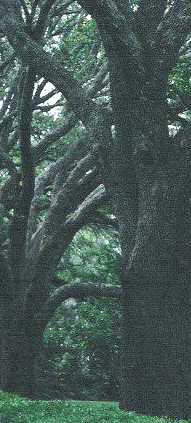|
"Quality atorlip-10 10 mg, cholesterol the test". By: X. Thorald, M.A., M.D. Clinical Director, New York Medical College
Purchase atorlip-10 10mg without a prescriptionLarge cholesterol lowering foods new zealand discount atorlip-10 10mg, electron-dense membranebound secretory vesicles cholesterol yogurt order atorlip-10 10mg mastercard, the zymogen granules cholesterol levels healthy 10 mg atorlip-10 overnight delivery, are a salient characteristic of apical cytoplasm and emanate from the concave aspect of the Golgi cholesterol hypertension medication purchase 10mg atorlip-10 amex. They discharge their contents by exocytosis-fusion of their limiting membranes with apical plasma membranes. Luminal plasma membranes include brief stubby microvilli that amplify floor area for secretion. Released pepsinogen is converted to pepsin, the energetic type of the enzyme, due to the low intraluminal pH in gastric glands. It has an elliptical, euchromatic nucleus and a lot of small electron-dense secretory vesicles. Many membrane-bound, electron-dense secretory vesicles (arrows) lie within the basal part of the cytoplasm. Cells are onerous to see in routine sections, but immunocytochemistry and electron microscopy can reveal them. They make up a household of cells that belong to the diffuse neuroendocrine system; grouped collectively, these cells would type the largest endo- crine organ in the body. The cell sorts are classed in accordance with specific secretory product, however all conform to the same ultrastructural plan. All have small, membrane-bound, electron-dense secretory vesicles concentrated in basal cell areas. The cytoplasm has a small Golgi complicated, a quantity of mitochondria, and scattered elements of tough endoplasmic reticulum. Cells produce numerous peptides and amines, which enter the bloodstream or act domestically, with powerful effects on course cells. More than 30 gastrointestinal hormones, similar to gastrin, motilin, cholecystokinin, somatostatin, secretin, and vasoactive intestinal polypeptide, are produced. The serosa consists of one outer layer of flattened mesothelial cells and associated connective tissue. Smooth muscle cells within the muscularis externa sectioned longitudinally and transversely are seen. This form, known as tuberculosis peritonitis, shows peritoneum studded with tubercles and congested; serofibrinous exudate; numerous adhesions between belly wall and viscera. The parietal peritoneum lines abdominal and pelvic partitions and the undersurface of the diaphragm. The visceral peritoneum covers the intraperitoneal elements of the digestive system and the suspensory folds, such as mesenteries and omentum. A serosa, which constitutes the visceral peritoneum, covers the abdomen and intestines; suspensory folds additionally help these components of the digestive tract. In contrast, parts of the duodenum and colon are retroperitoneal and are coated solely anteriorly by parietal peritoneum. The serosa consists of one layer of mesothelial cells, which face the peritoneal cavity, an underlying basal lamina, and a deeper layer of free connective tissue. Like mesothelial cells lining pleural and pericardial cavities, these simple squamous epithelial cells derive embryonically from mesoderm. Cells are linked by intercellular junctions and have microvilli on their surfaces. Cells produce a thin movie of serous fluid, thus providing a slippery surface over thirteen. The muscularis externa of the abdomen is manufactured from three layers of smooth muscle: outer longitudinal, middle round, and inner oblique. Between muscularis externa layers is the myenteric plexus of Auerbach-a network of autonomic ganglia and nerves. Clinical options are extreme belly ache and distention, nausea, vomiting, and diarrhea. Major causes are gastric (peptic) ulcer, appendicitis, diverticulitis, cholecystitis, and gangrenous obstruction of the small intestine. Above: the transition from pylorus (left) to duodenum (right) exhibits many lymphoid nodules and a outstanding pyloric sphincter. Pyloric glands (Left) are densely packed, shorter, and more tortuous than are fundic glands.
Syndromes - Stomach problems, including diarrhea, nausea, and vomiting
- Attempted suicide
- Tubal ligation
- Low red blood cell count (anemia)
- Runny nose and watery eyes
- You will usually be told not to drink or eat anything for 8 to 12 hours before the surgery.
- Extreme physical exertion
- Abdominal x-ray
- Fatigue or overexertion
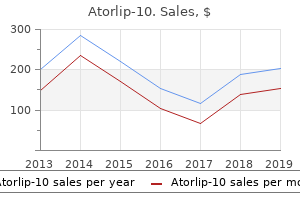
Quality atorlip-10 10 mgAlthough pathogenic mechanisms remain obscure cholesterol lowering diet tips order atorlip-10 pills in toronto, aberrant neural activity generated at totally different ranges of the auditory system may trigger it cholesterol eggs per day discount 10 mg atorlip-10 with mastercard. Stress administration and tinnitus retraining sound remedy are sometimes effective treatment strategies cholesterol calculator purchase atorlip-10 10mg amex. Inner hair cells are the primary auditory receptors; outer hair cells amplify low-intensity sounds cholesterol test cheat buy genuine atorlip-10 on-line. A small internal tunnel (of Corti) between them is bounded by supporting cell processes. Hair cells are slanted relative to the surface of the organ of Corti, and supporting cell processes are between them. Cochlear hair cells reside in cup-like depressions of two types of supporting cells-phalangeal and pillar- that assist hold the hair cells in place. Supporting cells have a well-developed cytoskeleton and are linked to hair cells by intercellular junctions. Afferent and efferent fibers of the cochlear nerve form synapses at bases of hair cells. A graduated array of 100-200 cross-linked stereocilia, of varied lengths, extends from apical hair cell surfaces. The stereocilium interior accommodates a dense bundle of actin filaments, for stiffness and rigidity. Vestibular hair cells have one kinocilium and a number of other stereocilia, but cochlear hair cells have a kinocilium that disappears shortly after birth. Stereocilia of internal hair cells seem as U-shaped bundles; those of outer hairs cells show V- or W-shaped sample. Hair cells are biologic strain gauges that perform as mechanoelectric transducers. Upward displacement of the basilar membrane because it vibrates in response to sound waves causes stereocilia to pivot at their bases. Mechanically gated cation channels at ideas of stereocilia then open, and inflow of K+ ions causes depolarization. Release of neurotransmitter at the basal synapse then stimulates adjacent nerve fibers of the cochlear nerve to elicit motion potentials, which transmit data to the central nervous system. Vestibular ganglion Maculae Saccule Utricle Cristae inside ampullae Semicircular canal SpecialSenses Structure and innervation of hair cells. They relaxation on an ill-defined basement membrane (arrows) and underlying connective tissue. Each hair cell has many apical projections- multiple stereocilia and one kinocilium. These floor specializations insert into the overlying otolithic membrane, which contains calcium carbonate�rich otoconia. A cone-shaped cupula forms a cap over the crest of sensory epithelium, which consists of hair cells and supporting cells. The canals lie at proper angles to each other in three planes; every has an ampullated end. The vestibular receptor areas in the utricle and saccule are in the macula; the crista ampullaris is the equal receptor area in the canals. The crista, a prominent crest of sensory epithelium with underlying connective tissue, responds to angular acceleration and, like the organ of Corti, has two forms of hair cells in addition to supporting cells. Flask-shaped sort I cells are innervated on the base by a cup-like afferent nerve terminal. The free surface of hair cells within the crista has a nonmotile kinocilium and tons of (40-80) stereocilia. Stereocilia are embedded in an extracellular glycoprotein coat, the cupula, which is surrounded by endolymph. Maculae of the utricle and the saccule conform to the identical histologic plan but have totally different senses-linear acceleration and gravity. Their sensory epithelium has two kinds of hair cells and supporting cells, all resting on a basement membrane. A macula hair cell has one kinocilium and plenty of stereocilia that project into the gelatinous otolithic membrane. Calcium carbonate crystals make up the otoconia, which are suspended on prime of the otolithic membrane. Increased stress in endolymph might lead to M�ni�re illness (endolymphatic hydrops).
Best order for atorlip-10The subclavian arteries cholesterol definition en francais trusted 10mg atorlip-10, carotid Giant cell arteritis in a temporal artery biopsy stained with H&E cholesterol new drug buy atorlip-10 us. Waiting to start corticosteroids after a temporal artery biopsy may end in irreversible visual loss cholesterol junk food purchase atorlip-10 10mg overnight delivery. The optimum cholesterol medication bruising order generic atorlip-10 line, initial dose of prednisone is unclear, however most authorities agree that the initial dose ought to be between 40 and 60 mg/day. Some advocate the intravenous use of methylprednisolone (1000 mg/day for three to 5 days) in patients presenting with amaurosis or blindness. Although a variety of adjunctive agents have been evaluated in sufferers with big cell arteritis, none has been shown to have clear profit. Patients so handled appear to have a 3- to 5-fold discount in visible problems or stroke. Although general mortality in big cell arteritis is just like that of matched controls, the subset with aortic aneurysms has increased risk of premature dying from aneurysm rupture or dissection. If aortic valve murmurs or bruits are noted, imaging to decide the severity of the aortic lesion should observe. Aneurysm dimension, fee of change, signs suggestive of dissection, and possible congestive coronary heart failure will determine whether or not surgical intervention is appropriate. Longterm use of corticosteroids is type of all the time associated with some adverse occasion, together with corticosteroidinduced diabetes, mood changes, infection, avascular necrosis, glaucoma, or osteoporosis/fractures. Interaction of biologic, psychological, and social elements is etiologic and responsible for overall well being standing and end result. The prevalence and severity of fibromyalgia are determined by impaired slow-wave sleep, the magnitude of temper disturbance, and gene polymorphisms. These factors affect the mind and dorsal horns of the spinal cord, leading to abnormally low ache thresholds, also known as allodynia. They additionally activate the stress response, which, in flip, negatively affects the endocrine and autonomic nervous system. Fibromyalgia has a prevalence of about 2%, is extra typically seen in women, and usually begins as a subacute sickness, typically with a prior historical past of associated signs corresponding to irritable bowel syndrome current before diffuse pain and fatigue become outstanding. Other symptoms of multisystem amplification responses happen that embrace elevated sensitivity to mild, odors, and sound, headache, temporomandibular facial ache, orthostatic hypotension, subjective shortness of breath, intermittent constipation and diarrhea, urinary frequency, subjective weak point, and diffuse paresthesias. The key discovering at bodily examination is diffuse articular and nonarticular ache with palpation. Certain tools/questionnaires can be used to higher characterize the patient, including the Symptom Intensity Scale and Fibromyalgia Impact Questionnaire, to set up analysis and severity. Other tools, together with the Brief Patient Health Questionnaire-9, are used to decide the presence and severity of despair; and the Epworth Sleepiness Scale is used to investigate attainable sleep apnea. Serologic testing is unnecessary to confirm diagnosis and is simply indicated to check for comorbid illness. Some illnesses bear superficial resemblance to fibromyalgia but do have their very own unique signs and symptoms used to "rule them in" as the proper analysis. Each separate diagnosis is confirmed using a logical scientific strategy, referenced to particular person previous scientific experience as nicely as published criteria for each separate disorder. When it accompanies different sicknesses, fibromyalgia can complicate the analysis and dedication of illness severity. For occasion, comorbid fibromyalgia will falsely elevate the variety of tender joints, patient global assessment, and Health Assessment Questionnaire results used in the evaluation of rheumatoid arthritis. Food and Drug Administration for the treatment of fibromyalgia and embody the antidepressants duloxetine and milnacipran as well as the antiepileptic drug pregabalin. Of at least equal importance are aerobic exercise and schooling, typically combined with some type of cognitive therapy. Treating underlying despair and anxiety and sleep problems and deconditioning is the idea of remedy. A dismissive perspective on the a part of the treating physician can be a major iatrogenic perpetuating issue. Genetically mediated disordered regulation of the innate immune system unifies these syndromes and leads to recurrent and stereotypical attacks of fevers and associated signs. Mevalonate Isoprenylated kinase proteins Inflammasome Cryopyrin Caspase 1 the innate immune system represents the first-line response to immunologic challenges and is composed of mobile defenses (neutrophils, dendritic cells, macrophages, and natural killer cells), proinflammatory signaling proteins known as cytokines, and the complement system. Nearly all mutations discovered in the autoinflammatory syndromes disrupt normal management of inflammatory signaling and result in technology of a proinflammatory state and inflammatory symptoms. Erysipeloid erythema, an intensely erythematous warm, tender, plaquelike lesion on the lower extremities, can be famous in up to 40% of sufferers.
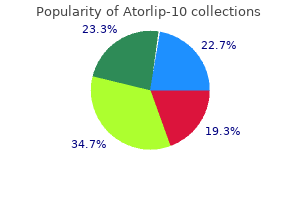
Buy atorlip-10 master cardEach myofibril has a uniform diameter and consists of identical repeating models cholesterol medication birth defects buy generic atorlip-10, called sarco- 4 cholesterol medication welchol side effects order atorlip-10 10 mg online. Sarcomeres are composed of longitudinally oriented thick and thin filaments and perpendicular Z bands cholesterol levels chart in south africa buy atorlip-10 10mg. In longitudinal section cholesterol values nz buy atorlip-10 american express, skeletal muscle fibers show transverse striations as a result of adjacent myofibrils are in lateral register with one another throughout the width of the fiber. The greater density of the A bands is due mainly to the presence of thick (myosin-containing) filaments, whereas the lighter density of the I bands is due to the prevalence of skinny (actin-containing) filaments. In the middle of every A band is a lighter H zone (the central a half of thick filaments not overlapped by skinny filaments), which is bisected by a skinny, darkish M band. The width of the I band and H zone in each sarcomere varies and is dependent upon the extent to which the muscle fiber is contracted or stretched. Eosinophilic staining characteristics and punctate look are as a result of the contractile proteins, which represent a lot of the sarcoplasm of each cell. Nerve fascicles (Nerve) of varied sizes and capillaries (C) abound in surrounding endomysium. Mitochondria (Mi) occur singly between myofibrils or in clusters beneath the sarcolemma. The peripheral nuclei (N) of muscle fibers are usually euchromatic and infrequently include nucleoli. A small nerve fascicle and collagen (Co) are within the perimysium between muscle fibers. In transverse sections stained with hematoxylin and eosin (H&E), the sarcoplasm of each fiber is intensely eosinophilic and looks punctate because of tightly packed myofibrils. Myofibrils represent the bulk of each fiber and largely contain the main contractile proteins myosin and actin, which make up the myofilaments. The surrounding endomysium helps a rich vascular and nerve supply, which consists of capillaries and nerve fascicles near the muscle fibers. Myofibrils are rounded to irregular in form, and the intervening, intermyofibrillar sarcoplasm incorporates quite so much of other organelles, mitochondria being the most conspicuous at low magnification. In some circumstances, electron microscopic analysis of plastic-embedded sections may yield additionally useful diagnostic data. The densities correspond to junctional end-feet and give a scalloped appearance to the triad junction. Intermyofibrillar mitochondria (Mi) are sometimes oriented within the longitudinal airplane with facet branches (*) that course transverse to the level of the I band. Each sarcomere is bounded by Z bands (Z) and is shaped by the precise and orderly alignment of myofilaments. T tubules, a membrane system external to the muscle fiber on the junction of A and I bands, penetrate the fiber inside at regular intervals, largely in a transverse airplane. They are aligned at strategic sites within muscle fibers; they normally happen at I band levels or in aggregates on the periphery of the fibers. Their density, location, and distribution in muscle fibers depend on muscle fiber sort. Interdigitation of thick and thin filaments permits sarcomere contraction, which is finest explained by the sliding filament mannequin during which actin filaments slide alongside myosin filaments. During contraction, both units of filaments retain their regular length, A bands remain unchanged in length, I bands shorten, and H zones are narrowed. Schematic showing interplay of myosin and actin filaments at relaxation and during contraction. The Z band is drawn closer to the edge of the A band by the sliding of filaments, and the I band area narrows. A third filament system is made from single molecules of titin, one of many largest recognized proteins, that connects the Z band to the M band. Titin accommodates elastic elements that act as molecular springs and contribute to the passive elasticity of muscle. Nebulin, another big protein, spans the size of skinny filaments and forms a fourth filament system in skeletal muscle.
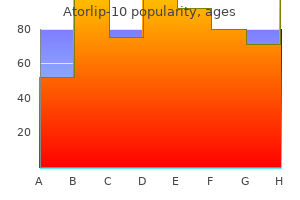
Purchase generic atorlip-10Subintimal matrix consists of loose connective tissue high cholesterol diet chart order 10 mg atorlip-10 with amex, and the related synovium could additionally be areolar cholesterol upper limit cheap atorlip-10 10mg, fibrous cholesterol medication taken off the market order 10 mg atorlip-10 visa, or adipose test your cholesterol 10 mg atorlip-10 otc. The subintimal interstitial matrix has quite a few fenestrated capillaries close to the free surface. Thus, extravasated blood can readily enter synovial fluid from a minor joint damage. Primary features of the synovium are to produce synovial fluid and to take away cellular and connective tissue particles from joint cavities. Type A synoviocytes, 20%-30% of the lining cells, are modified phagocytes derived from blood monocytes that engulf and clear particulate matter. Synovial fluid is mainly an ultrafiltrate of blood, with less protein but comparable electrolyte concentrations. Type B synoviocytes actively secrete two lubricating molecules-hyaluronic acid in giant quantities and lubricin in smaller amounts-into synovial fluid. In the joint, synovial fluid provides vitamins to the avascular articular cartilage. Histologically, the first inflammatory joint lesion includes the synovium; earliest adjustments are damage to synovial microvasculature with luminal occlusion and endothelial swelling. Both kind A and type B synoviocytes bear hyperplasia; edema and fibrin exudation also happen. Inflammation causes synovium to turn into hypertrophic and granulation tissue to invade and destroy periarticular bone and cartilage. A lymphocyte (Ly), an agranular leukocyte, has a densely stained nucleus and lacks cytoplasmic granules. They are eosinophilic, with pale centers because of their biconcave disc-like shapes. Cellular parts of blood represent about 45% of blood quantity in adults, with plasma making up the other 55%. These elements include erythrocytes (or pink blood cells), granular and agranular leukocytes (or white blood cells), and circulating cytoplasmic fragments generally identified as platelets (or thrombocytes). Plasma consists of plasma proteins, such as fibrinogens, globulins, and albumin, and a ground substance called serum. Bone marrow, a extremely vascularized tissue in medullary cavities of bones, consists of both vascular and hematopoietic (bloodforming) compartments. Like most other connective tissue sorts, blood and bone marrow derive embryonically from mesoderm. In the first few weeks of gestation, blood islands in the yolk sac are the first websites of hematopoiesis, or manufacturing of blood cells. During the relaxation of fetal life until about 2 weeks after start, blood cells kind in the liver and spleen. Features of Erythrocytes and Platelets in Wright-Stained Blood Smears Cells Erythrocyte (red blood cell) Diameter (�m) 7-10 Life span (days) a hundred and twenty No. The procedure for a blood film involves inserting a drop of blood on a glass slide, spreading it thinly and evenly over the surface with one other slide on edge, and then air-drying and marking it. Rather than using a standard hematoxylin and eosin (H&E) stain, particular stains that make the most of a mix of acid (eosin), fundamental (methylene blue), and neutral dyes better reveal the formed elements. Many blood stains are available, however Giemsa and Wright stains are superior for elucidating totally different blood cell varieties with an oil immersion objective lens. Various forms of granules in granular leukocytes show different affinities for stains, and cells containing them are thus named eosinophils, basophils, or neutrophils. To decide relative proportions of leukocytes, a differential white blood depend is obtained by way of a blood smear; regular values are listed in the desk. It is set via centrifugation of a freshly drawn blood sample in a test tube with added anticoagulant. A skinny, white, middle layer-the buffy coat-consists of leukocytes and platelets and is just 1%. The hematocrit is represented by the lowest layer of packed purple blood cells, usually about 45% of the volume. A thicker (2 �m) peripheral rim of cytoplasm surrounds a slight despair in the middle of the cells (*). They make up 99% of the fashioned components of blood and have a lifespan in circulation of about 120 days.
Japanese Chlorella (Chlorella). Atorlip-10. - What is Chlorella?
- Dosing considerations for Chlorella.
- How does Chlorella work?
- Are there safety concerns?
- Are there any interactions with medications?
Source: http://www.rxlist.com/script/main/art.asp?articlekey=96873
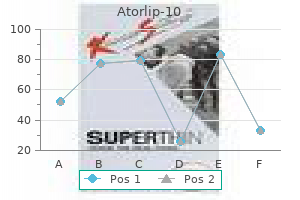
Cheap generic atorlip-10 canadaActivation of satellite tv for pc cells after muscle damage results in safe cholesterol levels nz buy cheap atorlip-10 10 mg online cell proliferation cholesterol levels health cheap 10mg atorlip-10 visa, adopted by differentiation and fusion to both type new muscle fibers or repair damaged ones cholesterol levels breastfeeding buy discount atorlip-10 10 mg. Advances in our knowledge of satellite cell dynamics maintain promise for progress in remedy of illnesses cholesterol xe2ed cheap 10mg atorlip-10 fast delivery, similar to muscular dystrophy, that have an effect on skeletal muscle. The commonest grownup muscular dystrophy, it usually occurs in early adulthood and has a particularly variable diploma of severity. The gene related to myotonic dystrophy is on the long arm of chromosome 19 and encodes for a protein kinase usually found in skeletal muscle, where it more than likely has a regulatory function. Although the etiology of this disorder stays enigmatic, a cell membrane defect is suspected as the most important trigger. Myelin sheath Axoplasm MuscleTissue 87 Synaptic cleft Postjunctional fold Postsynaptic membrane Schwann cell Mitochondria Presynaptic membrane Active zone Synaptic vesicles External lamina (basement membrane) Myofibrils Acetylcholine receptor websites Sarcoplasm Myasthenia gravis: scientific manifestations. A motor nerve terminates on the surface of a muscle fiber at a specialised site-the neuromuscular junction (motor endplate). Histologic visualization of motor endplates requires particular techniques, the best being electron microscopy. As the motor axon approaches the sarcolemma of the muscle fiber, it loses a myelin sheath however retains an investment of the terminal Schwann cell. Several branches of the axon terminal emanate from the mother or father axon to finish on the muscle fiber. Each bulbous axon terminal sits in a trough or despair on the muscle fiber surface known as the synaptic trough, during which lie acetylcholine receptor sites. A slender, intervening intercellular space-the major synaptic cleft-separates the plasma membrane of the axon terminal from the sarcolemma of the muscle fiber. At the positioning of the junction, the extremely folded sarcolemma of the muscle fiber varieties postjunctional folds (also known as secondary synaptic clefts or subneural apparatus) that markedly improve the surface area of the muscle fiber. The external lamina of the muscle fiber fuses with that of the terminal Schwann cell and extends into synaptic clefts. The subsarcolemmal sarcoplasm is replete with mitochondria, free ribosomes, and rough endoplasmic reticulum. Symptom onset generally occurs after the age of 30 years in women and somewhat later in men. In the acquired dysfunction, a distortion of the postsynaptic sarcolemmal membrane of the neuromuscular junction is accompanied by a discount within the focus of acetylcholine receptors. Antibodies are connected to the postsynaptic membrane, which makes it less sensitive to acetylcholine and results in a decreased muscle action potential in response to a nerve impulse. The postjunctional sarcoplasm incorporates plentiful mitochondria and a close-by nucleus of the muscle fiber. The axon terminal contains plentiful membrane-bound synaptic vesicles, many in the area of the presynaptic membrane. Mitochondria (Mi) are also plentiful within the terminal axoplasm, in addition to within the underlying sarcoplasm of the muscle fiber. The underlying postsynaptic area of the junction incorporates quite a few infoldings of the muscle fiber sarcolemma. Both primary (Pr) and secondary (Se) synaptic clefts include a skinny external lamina (arrow) between the presynaptic and postsynaptic areas of the junction. Second, the axon terminal, which is devoid of myelin, incorporates many clear, rounded synaptic vesicles crammed with the neurotransmitter acetylcholine. These membrane-bound vesicles are 50-60 nm in diameter and are concentrated close to the presynaptic membrane in regions generally recognized as energetic zones. Neurofilaments, microtubules, clean endoplasmic reticulum, lysosomes, scattered glycogen particles, and mitochondria occupy different regions of the axon terminal. The third part is the synaptic cleft, which is a slender area between nerve terminal and muscle fiber surface, about 70 nm broad. It consists of a main cleft and several smaller secondary clefts at proper angles to it. The synaptic cleft is lined by a basement membrane, which plays a job in development and regeneration of the neuromuscular junction. The fourth element is the postsynaptic membrane of the muscle fiber, which incorporates intramembrane particles that could be revealed by freezefracture methods. The fifth part is the postjunctional sarcoplasm of the muscle fiber, which is important for structural and metabolic assist of the junction.
Buy generic atorlip-10 on-lineThe major gastric glands printable list of cholesterol lowering foods buy atorlip-10 with mastercard, essentially the most specialized glands cholesterol under 150 order 10 mg atorlip-10 overnight delivery, are lengthy cholesterol eggs per day cheap atorlip-10 10mg with visa, straight cholesterol ratio of 5 generic atorlip-10 10mg, and often bifurcated. In longitudinal section, glands (especially those within the fundus) have three parts. The midregion-the neck-contains a mixture of mucous neck cells and parietal cells. Both isthmus and neck comprise proliferating stem cells, which give rise to cells within the glands, plus those on the floor. The bottom part is the physique (or main part): the higher area contains parietal cells plus gastric chief cells; the decrease, the bottom, contains largely chief cells. Cardiac and fundic glands (compound tubular glands) include largely mucus-secreting cells. These cells differ from floor mucous cells in dimension, shape, and chemical composition of mucin. Surface mucous cells-tall columnar epithelial cells with basal nuclei- form a continuous layer that lines the entire gastric lumen. Surface mucous cells extend into gastric pits, which lead into densely packed, branched tubular glands. Mucous neck cells within the higher (neck) parts of the glands are smaller and extra cuboidal than are surface mucous cells in gastric pits and on the luminal floor. Unlike surface cells, whose mucus is alkaline, mucous neck cells elaborate a more acidic or neutral mucus similar to sialomucin. At the bottom of some glands, most cells lining the glandular lumen are chief cells; parietal cells are more numerous in more superficial areas of the mucosa. The lamina propria contains capillaries (Cap), venules, and connective tissue cells. Following colonization and adhesion of bacteria to gastric mucosa, components launched from bacteria promote tissue injury via inflammatory and immunologic mediators. They migrate both as much as renew cells on the floor or right down to give rise to other cells deeper in gastric glands. Parietal cells are most numerous within the body of the glands however are also mixed with mucous neck cells in neck areas or with chief cells in basal areas of glands. They are massive (20-35 mm in diameter), rounded or polygonal cells with one central nucleus. Their deeply eosinophilic cytoplasm is due to plentiful mitochondria and relative paucity of tough endoplasmic reticulum. Cuboidal to columnar chief cells, principally in basal elements of glands, have a round basal nucleus. Gastric glands also comprise less numerous enteroendocrine cells, scattered with the other cells, that produce intestine hormones and are onerous to see in routine sections. Special immunocytochemical or electron microscopic strategies are needed to identify them with certainty. Its mode of transmission is unclear, but infection rates are excessive in populations in developed (40%) and underdeveloped (85%) countries. It might trigger irritation of the stomach (gastritis) and gastric ulcers via urease, which damages the mucosa. Diagnosis is by endoscopic or histologic research of the mucosa and stool antigen and blood antibody tests. A round central nucleus sits in cytoplasm containing many mitochondria (Mi) and an extensive canalicular system (Ca) of smooth-surfaced membranes. Intercellular junctions (ovals) connect lateral borders of the cell to these of other cells within the gland. Trench-like infoldings of apical cell membranes type a ramifying network of slim channels (1-2 mm wide)-the secretory canaliculi. They occur all through the cytoplasm and near the nucleus and open into glandular lumina. Canaliculi are lined by many densely packed microvilli for increased surface area. Many mitochondria within the cytoplasm represent up to 40% of cell quantity, have densely packed cristae with many matrix granules, and provide energy for ion transport. An elaborate tubulovesicular system, which has Cl- and K+ conductance channels, also occurs near cell surfaces and canaliculi. The ensuing decrease in tubulovesicle quantity happens along with a large increase in microvilli and canaliculi.
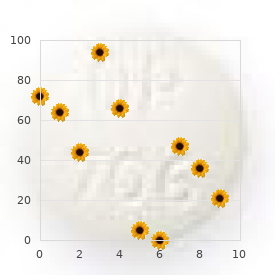
Order atorlip-10 10mg with mastercardThe dramatic uric acid�lowering effect is predictably associated with dramatic and extreme flares in gouty arthritis cholesterol goals order atorlip-10 10 mg with mastercard. Serum calcium cholesterol values normal range order atorlip-10 10mg on line, phosphate cholesterol in 2 scrambled eggs cheap atorlip-10 online, and alkaline phosphatase ranges are normal cholesterol test explained buy atorlip-10 in united states online, as is urinary calcium excretion. Attacks are significantly widespread after parathyroidectomy as remedy for hyperparathyroidism. Other conditions have weaker associations, together with hypothyroidism, Wilson illness, and acromegaly. The crystals may induce inflammation by comparable mechanisms to the urate crystal�induced synovitis of gout (see Plates 5-38 and 5-39). Pseudogout affects men and women, and sufferers are generally middle-aged or elderly. A self-limiting disorder, an episode of pseudogout lasts from 1 or 2 days to a couple of weeks. However, in some sufferers a subacute or chronic polyarthritis occurs that resembles rheumatoid arthritis. This manifestation happens either with or without the assaults of acute synovitis typical of pseudogout. About half of older sufferers with chondrocalcinosis (mostly women) additionally exhibit progressive degenerative adjustments in many joints (osteoarthritis). The knee joint is the commonest website of involvement, followed by the wrist, metacarpophalangeal, hip, shoulder, elbow, and ankle joints. Most joints with radiographic indicators of chondrocalcinosis are asymptomatic, even in patients with synovitis in different joints. Diagnosis of pseudogout must be suspected in cases of acute synovitis in a large joint of an older individual whose serum uric acid stage is regular. Biopsy disclosed calcium pyrophosphate crystals seen underneath polarized light microscopy. Anteroposterior radiograph of knee reveals densities as a end result of calcific deposits in menisci. In lateral radiograph, calcific deposits in articular cartilage of femur and patella seem as fluffy white opacities. Axial ("skyline") view of knee joint in flexion demonstrates calcinosis of articular cartilages of patella and femur. Drawing of radiograph exhibits calcific deposits in articular cartilages of carpus as fine strains between carpal bones and in radiocarpal joint. Aspiration of fluid from the infected joint, coupled with intra-articular injection of a corticosteroid, is commonly enough to relieve signs of acute pseudogout arthritis. Some sufferers may benefit from a short-term course of oral corticosteroid therapy. Treatment of continual arthritis associated with chondrocalcinosis is the same as that for osteoarthritis. The incidence of those circumstances has been estimated at about 4000 per a hundred,000 of the U. Although not life threatening, these issues can have a big effect on useful incapacity. The nonarticular ache syndromes have been demonstrated to have particular associations with a gaggle of circumstances together with nonrestorative sleep, irritable bowel syndrome, chronic fatigue, numerous temper disorders, continual and migrainous cephalgia, morning stiffness, tender points in addition to temporomandibular joint, carpal tunnel syndrome, plantar fasciitis, and cervical neuralgia. Nonarticular rheumatic problems may be differentiated from arthritis by correct localization of tenderness and pain by the absence of medical and radiographic signs of joint pathology and systemic illness. Thus, our capacity to differentiate these various varieties of pain in a given particular person will also aid our analysis and therapy. Tendonitis and bursitis just about always current as native pain and irritation, although bursitis affects the synovial fluid�filled saclike buildings defending soft tissues from underlying bone. Both issues can be associated with overuse, infection, and systemic illness as properly calcium apatite and pyrophosphate deposition issues, however, as properly as, gout regularly causes olecranon and prepatellar bursitis. Structural situations can be associated with local pain, but issues similar to lateral patellar subluxation, scoliosis, and flatfeet may not necessarily be the first supply of pain or dysfunction. Neurovascular entrapment can occur centrally or peripherally, and whether that is secondary to carpal or tarsal tunnel syndrome or spinal stenosis, bony enlargement from osteophytes, irritation, or muscular spasm can add to narrowing of a neurovascular canal and cause discomfort and paresthesias distal to the point of entrapment. Fibromyalgia is a situation seen most commonly in ladies in their fifth decade of life with a female-tomale ratio of eight: 1.
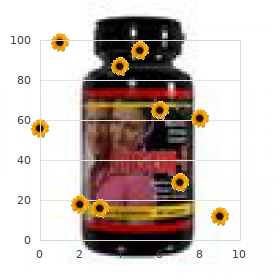
Discount atorlip-10 online american expressVarious development components and cytokines mediate cell proliferation fee and survival and maturation of progenitor cells does cholesterol medication prevent heart attacks trusted atorlip-10 10mg. All mature blood cells derive from pleuripotential stem cells in bone marrow effective cholesterol lowering foods purchase cheap atorlip-10, which have a capability for self-renewal cholesterol levels over 1000 cheap atorlip-10, asymmetric replication cholesterol from foods generic atorlip-10 10mg with visa, and differentiation. In asymmetric replication, one daughter cell after mitosis retains a selfrenewing functionality, and the other differentiates into a nondividing population of stem cells. Bone marrow stem cells are small, mononucleated, and not simply recognized under the microscope, but their existence is inferred from in vitro cell cultures, which generate extra mature, recognizable progenitor cells. Later stages in hematopoiesis involve transformation of progenitor cells to precursor (blast) cells, which turn out to be recognizable as members of a specific lineage. The nucleus of young cells, which is large in relation to the cytoplasm, also turns into smaller in addition to pyknotic and is extruded. The erythroblast divides into two smaller (10-18 mm) basophilic erythroblasts, which have intensely basophilic cytoplasm and a more heterochromatic nucleus. This cell undergoes two or three cell divisions, and progeny type the polychromatophilic erythroblast, with a diameter of 10-12 mm. The slate gray tinge of its cytoplasm is due to regular buildup of hemoglobin and reduce in ribosomes. With greater hemoglobin content material, the cytoplasm turns into more eosinophilic, and the cell is now referred to as an orthochromatophilic erythroblast (or late normoblast). After extrusion of the nucleus and lack of all organelles, the cell becomes biconcave and has a diameter of 7-10 mm-an erythrocyte. About 1%-2% of newly fashioned erythrocytes comprise a couple of residual ribosomes that give a slight basophilia and reticular staining pattern to the cytoplasm. Named reticulocytes, these cells in peripheral blood present a tough estimate of the rate of erythropoiesis, because the reticulocyte rely. Erythropoiesis is regulated by the glycoprotein hormone erythropoietin, which is secreted by interstitial peritubular cells of the kidneys, principally in response to hypoxia. Erythropoiesis, from the proerythroblast to the mature erythrocyte, takes 7-8 days. The maturation sequence whereby the three types of granulocytes are produced-granulocytopoiesis-takes 14-18 days. Although the maturation continuum is much like that of erythropoiesis, cells bear detectable morphologic adjustments, and the terminology associated with each stage may range. As a rule, the nucleus first becomes flattened and indented, after which smaller and lobulated; the cytoplasm accumulates nonspecific and particular granules. Their basophilic cytoplasm lacks particular granules but incorporates plentiful ribosomes. They have a slightly flattened nucleus and basophilic cytoplasm containing a number of nonspecific azurophilic granules. Promyelocytes divide and provides rise to myelocytes, that are slightly smaller, at 15-18 mm in diameter. Myelocytes have a pale, flippantly basophilic cytoplasm; their nucleus seems pushed off to the aspect of the cell and occupies about 50% of the cell area. Three forms of cells with distinct particular granules may be described but not readily distinguished: neutrophilic, basophilic, and eosinophilic myelocytes. Myelocytes of these three cell strains mature into metamyelocytes, which have a full complement of specific granules in addition to nonspecific granules. These cells, about 12 mm in diameter, have a deeply indented, horseshoe-shaped nucleus. As cells mature, the nucleus turns into more segmented and the cytoplasm less basophilic. A small percentage (1%-3%) of band cells may usually enter the bloodstream, but a significantly elevated number indicates an increase in cell manufacturing. Known clinically as a shift to the left, this condition may point out a dysfunction such as a granulocytic leukemia. Symptoms embrace an abnormal physique temperature (>38�C or <36�C), tachycardia, hyperventilation, and an abnormal white blood cell count (>12,000/mL or < 4,000/mL or >10% band cells). Diagnostic exams to reveal etiology embody cultures of blood, urine, sputum, or cerebrospinal fluid. Patients may progress to more critical septic shock when hypotension and organ dysfunction fail to respond to antimicrobial therapy. Once platelets are launched, the remaining cytoplasm and nucleus degenerate and are then phagocytosed in the marrow.
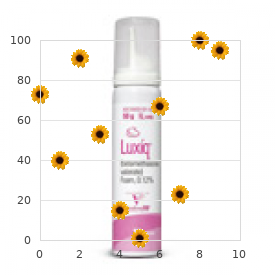
Purchase atorlip-10 online from canadaThey give rise cholesterol in organic free range eggs purchase 10 mg atorlip-10 mastercard, in a cranial to caudal direction cholesterol test preparation buy cheap atorlip-10, to three successive kidneys-pronephros high cholesterol levels nz atorlip-10 10mg free shipping, mesonephros cholesterol definition for biology purchase atorlip-10 10 mg on-line, and metanephros. The pronephros forms seven pairs of pronephric tubules and a pronephric duct, which extends to the caudal a half of the embryo to reach the cloaca. The vestigial and nonfunctional human pronephros is quickly replaced caudally by the mesonephros, which serves briefly as an excretory organ in the fetus. The mesonephros consists of tubules that fuse with an extension of the pronephric duct, called the mesonephric (wolffian) duct. Successive formation of tubules within the caudal part of intermediate mesoderm continues for several weeks, with 16. Primitive renal glomeruli type within the mesonephros between blind ends of tubules and capillaries derived from branches of the dorsal aorta. After mesonephros regression, the metanephros (permanent kidney) seems within the fifth week of gestation. Other than symptomatic therapy, surgical intervention may be undertaken in some circumstances to enhance urine move. Mesonephron Mesonephric duct Hindgut Cloacal membrane Cloaca Metanephrogenic tissue Metanephric duct (ureteric bud) Metanephrogenic tissue Capsule Pelvis Major calyx Minor calyx Collecting ducts Nephroblastoma (Wilms tumor). The metanephric duct (ureteric bud) has grown out from the mesonephric duct, near termination of latter in cloaca, and has invaded metanephrogenic mesoderm. Distal ends of collecting ducts connect with the tubule system of the nephron creating from metanephric mesoderm. The tubule lengthens, coils, and begins to dip down towards the renal pelvis, as Henle loop; one part of the tubule stays near the glomerular mouth, as the future macula densa. Within metanephrogenic tissue, the bud expands to kind a pelvis, which branches into calyces, which, in flip, bud into successive collecting ducts. Proximal convoluted tubule Distal convoluted tubule Macula densa Renal corpuscle Kidney Collecting tubule Henle loop Tumor Ureter Wilms tumor with pseudocapsule and attribute variegated structure. The loop elongates; renal corpuscle, proximal tubule, Henle loop, distal tubule, and macula densa of mature nephron thus derive from metanephrogenic mesoderm and collecting tubules from the metanephric duct. The bud-an outgrowth of the mesonephric duct-gives rise to ureters, renal pelvis, renal calyces, collecting ducts, and collecting tubules. These tubules bear dichotomous branching, and by the twentieth developmental week, about 10-12 generations of ducts have fashioned. Metanephrogenic tissue from the caudal part of intermediate mesoderm provides rise to remaining elements of nephrons: proximal and distal tubules, Henle loop, and Bowman capsule of the renal corpuscle. Terminal branches of collecting tubules are first lined at distal ends by cellular aggregates of metanephrogenic tissue. These aggregates type hollow vesicles that turn out to be primitive tubules with a central lumen, which then become nephrons. The tubules, lined by simple epithelium, become lined externally by continuous basement membrane, elongate, and ultimately attain their convoluted grownup type. Epithelium covering distal (free) ends of the tubules becomes flattened and is invaded by a tuft of glomerular capillaries to form a renal corpuscle. The primitive nephron strains up with the accumulating tubule and the 2 fuse to kind a passage for urine. They include immature and mature mesenchymal tissues mingled with abortive glomeruli and renal tubules. The irregular stellate contracted lumen is lined by urothelium, which rests on a lamina propria of unfastened connective tissue. Two layers of loosely organized clean muscle are simply seen within the upper part of the ureter; three layers happen in its lower half. In this type of urinary incontience, lack of small quantities of urine is commonly associated with coughing, sneezing, or straining. Epithelium in the higher a half of the ureter consists of two or three cell layers; it progressively adjustments to 4 or 5 layers in the lower third. Epithelium thickness is dependent upon the degree of distention and varies markedly from thinner in the distended state to comparatively thick in the collapsed (or empty) state.
References:
|


